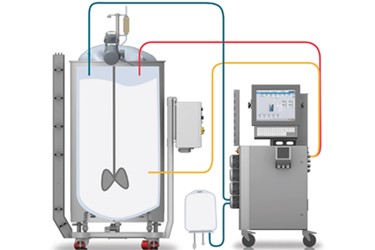The Ultimate Overview to Advanced Foam Control Techniques and Solutions
The Ultimate Overview to Advanced Foam Control Techniques and Solutions
Blog Article
A Comprehensive Overview to Applying Foam Control Solutions in Your Procedures
Effective foam control is an important element of functional effectiveness that often goes overlooked. Recognizing the ins and outs of foam generation can substantially affect both efficiency and product top quality. This overview outlines the various challenges positioned by foam and the diverse options available, supplying a structure for picking and executing one of the most ideal methods. By checking out vital aspects such as application compatibility and employees training, organizations can optimize their foam administration initiatives. As we check out these components, the possibility for transformative renovations in your operations becomes obvious. What actions will you take following?
Understanding Foam Challenges
Foam obstacles are a significant issue throughout numerous sectors, influencing functional performance and product top quality. The formation of extreme foam can hinder procedures such as mixing, transportation, and storage, leading to increased downtime and waste. In fields like food and drink, pharmaceuticals, and petrochemicals, foam can interfere with production lines, creating product variances and contamination risks.
Moreover, foam can block equipment performance, resulting in expensive repairs and upkeep. In wastewater treatment, foam can disrupt clarifier operations, resulting in lower therapy efficiency and regulatory compliance concerns.
Recognizing the underlying causes of foam generation is critical for reliable monitoring. Factors such as surfactants, temperature fluctuations, and anxiety degrees can all add to foam manufacturing. Identifying these components allows industries to execute targeted techniques that minimize foam development while keeping item integrity.
Sorts Of Foam Control Solutions

Mechanical services involve the usage of devices such as foam skimmers or defoamers. Chemical solutions, on the various other hand, include the application of defoaming agents-- compounds that interfere with the foam structure, leading to its collapse. Foam Control.
Last but not least, functional methods concentrate on process adjustments. This may include modifying devices parameters, such as temperature level and pressure, or changing the circulation rates of fluids to lessen foam generation. Implementing great housekeeping practices can likewise mitigate foam development by lowering contaminants that add to foam stability.
Choosing the suitable foam control option involves analyzing the specific requirements of the procedure, consisting of the sort of procedure, the qualities of the products included, and security considerations.
Picking the Right Products
Picking the best foam control products calls for a thorough understanding of the specific application and its unique difficulties. Variables such as the kind of foam, the environment in which it happens, and the wanted outcome all play crucial roles in item option. Foam Control. For example, in industries like food handling, it is important to pick food-grade defoamers that adhere to safety and security regulations while successfully taking care of foam.
Additionally, consider the thickness of the fluid where the foam trouble exists. Some items are created for low-viscosity applications, while others are tailored for thicker liquids. Compatibility with existing processes is another critical element; the picked foam control agents should integrate effortlessly without interfering with overall procedures.
One more important factor is the approach of application. Some items may require dilution, while others can be applied directly. Examining the simplicity of usage and the called for dosage can supply understandings into the product's effectiveness and cost-effectiveness.
Implementation Techniques
Effective implementation techniques for foam control services require an organized anonymous strategy that lines up item selection with operational needs. The primary step involves an extensive evaluation of the processes where foam happens, determining particular areas that require treatment. By engaging cross-functional teams, consisting of high quality, design, and manufacturing guarantee, companies can gather insights that educate the choice of the most reliable foam control items.
Following, it is essential to establish clear goals for foam decrease, making certain that these goals are attainable and measurable. This may involve defining acceptable foam levels and the timelines for implementation. Training employees on the residential or commercial properties and application approaches of chosen foam control representatives is equally important, as correct usage is crucial for optimum results.
Furthermore, incorporating foam control solutions into existing operations requires mindful planning. Ultimately, a well-structured approach will boost functional effectiveness while effectively managing foam-related obstacles.
Surveillance and Examining Performance
Monitoring and evaluating the effectiveness of foam control remedies is important for guaranteeing that applied strategies yield the preferred outcomes. This process entails systematic information collection and evaluation to examine the efficiency of foam control representatives and methods. Key efficiency indications (KPIs) need to be established prior to implementation, enabling a clear baseline against which to gauge progression.

Reviewing efficiency also needs routine testimonials of foam control procedures and representative efficacy. This can be achieved with sampling and screening, enabling operators to identify if existing services are meeting functional demands. Moreover, it is essential to get comments Recommended Reading from employee that engage with these systems daily, as their understandings can expose functional subtleties that measurable data may overlook.

Ultimately, a structured surveillance and evaluation framework helps identify necessary adjustments, making sure that foam control options continue to be effective, cost-efficient, and aligned with business objectives.
Verdict
In final thought, efficient foam control services are crucial for enhancing operational performance and maintaining item from this source quality. An extensive understanding of foam difficulties, incorporated with the selection of ideal products and implementation methods, assists in the effective monitoring of foam generation.
Applying good housekeeping methods can likewise mitigate foam development by decreasing impurities that add to foam stability.
Selecting the best foam control items calls for a complete understanding of the particular application and its special difficulties (Foam Control).Successful application strategies for foam control remedies need a methodical approach that lines up item selection with operational needs.In final thought, effective foam control remedies are necessary for maximizing operational efficiency and keeping item quality. A complete understanding of foam challenges, integrated with the option of proper items and application approaches, helps with the successful management of foam generation
Report this page